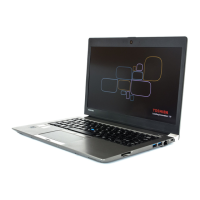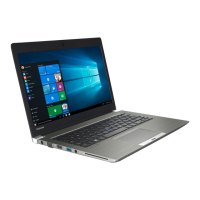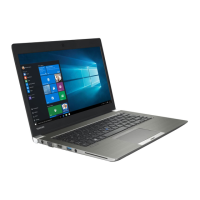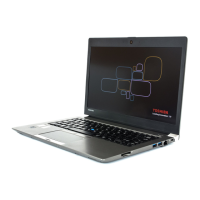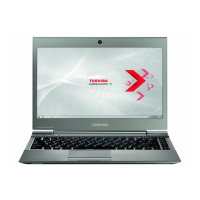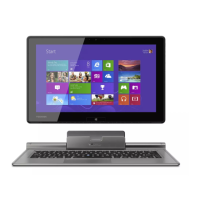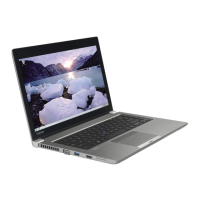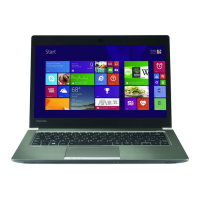
Do you have a question about the Toshiba Z30-B and is the answer not in the manual?
| Graphics | Intel HD Graphics 5500 |
|---|---|
| Processor | Intel Core i5 or i7 |
| RAM | Up to 16GB |
| Storage | SSD, up to 512GB |
| Display | 13.3-inch, 1920 x 1080 pixels |
| Weight | 1.2 kg |
| Battery Life | Up to 12 hours |
| Ports | USB 3.0, HDMI, VGA |
| Wireless | Wi-Fi 802.11ac, Bluetooth 4.0 |
Details copyright, disclaimers, and trademarks for the manual and product.
Provides regulatory compliance details, including FCC information.
Explains CE-Mark compliance and related European Directives.
Details appropriate and inappropriate working environments for the computer.
Provides instructions for proper disposal of the computer and its battery.
Provides licensing information for video standards used in the product.
Lists general precautions for safe and proper computer usage.
Lists necessary hardware and documentation included with the computer.
Provides initial setup guidance for new users, including safety.
Details how to connect the AC adaptor for power and charging.
Describes the procedure for powering on the computer.
Explains different modes for turning off the computer (Shut Down, Sleep, Hibernate).
Identifies external parts of the Z30-B model (front, sides, back, underside).
Identifies external parts of the Z40-B model (front, sides, back, underside).
Describes the internal hardware components of the computer.
Explains basic touch screen gestures and operations.
Details touch pad gestures, including tap, pinch, and scroll.
Describes keyboard layout, indicators, function keys, and special keys.
Guides on enrolling and using the fingerprint sensor for authentication.
Explains battery types, usage, charging, and maintenance.
Manages user and supervisor passwords and system access.
Customizes hardware settings, power options, and system configurations.
Provides access to BIOS settings for system configuration.
Manages computer power states like Sleep, Hibernation, and auto-off.
Manages processor temperature by controlling fan and speed for overheating protection.
Outlines steps for diagnosing and resolving computer problems.
Addresses issues with power, battery, keyboard, display, HDD, and peripherals.
Solutions for software errors, unresponsive programs, and startup issues.
Troubleshooting for LAN, Wireless LAN, and Bluetooth connectivity problems.
Information on how to contact TOSHIBA for further technical assistance.
Summarizes physical dimensions and environmental operating requirements.
Covers wireless technology interoperability, health, and regulatory compliance.
Information on Intel Active Management Technology and how to disable it.
Explains factors affecting performance and includes software license details.
